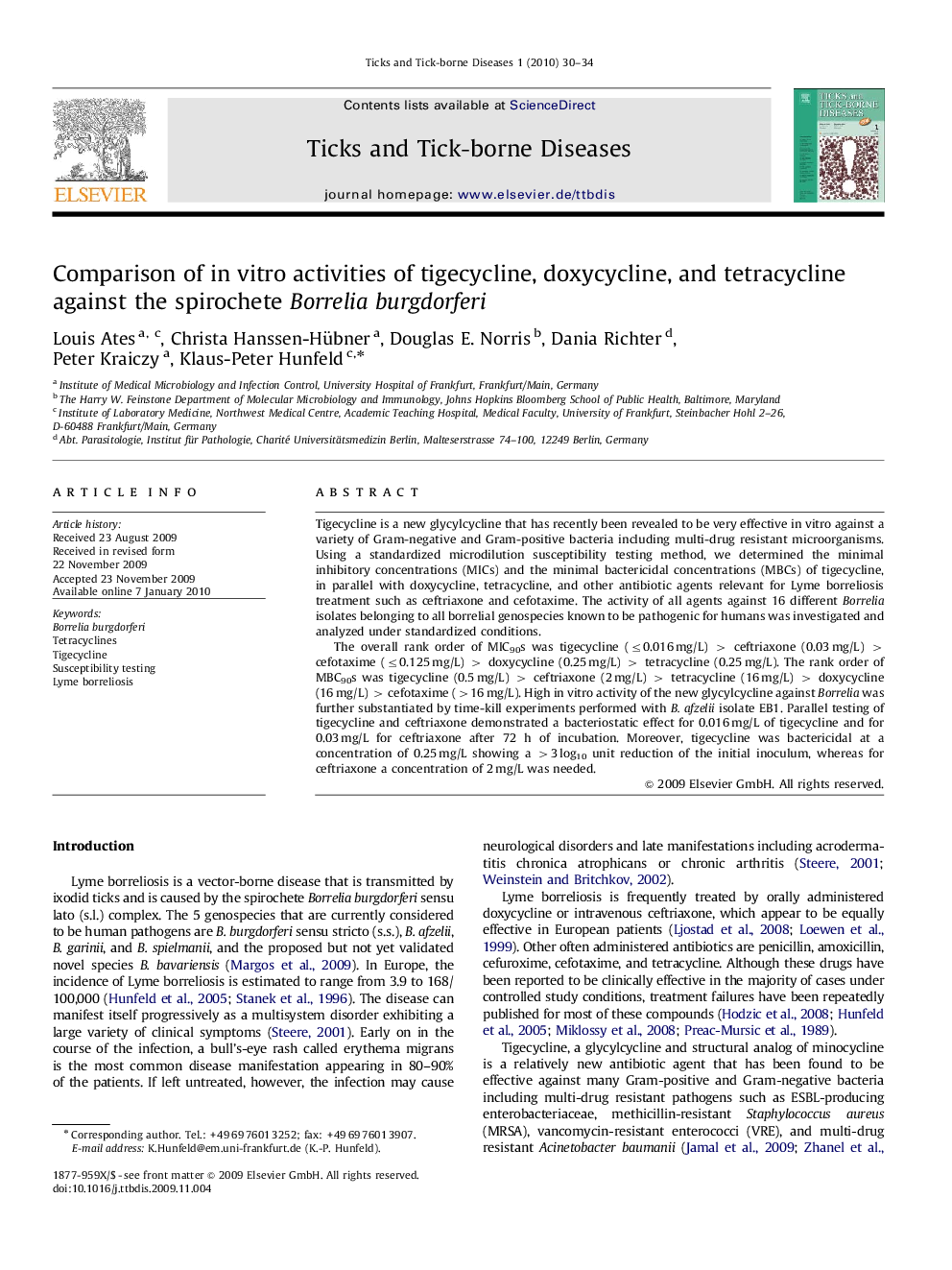| Article ID | Journal | Published Year | Pages | File Type |
|---|---|---|---|---|
| 2474185 | Ticks and Tick-borne Diseases | 2010 | 5 Pages |
Tigecycline is a new glycylcycline that has recently been revealed to be very effective in vitro against a variety of Gram-negative and Gram-positive bacteria including multi-drug resistant microorganisms. Using a standardized microdilution susceptibility testing method, we determined the minimal inhibitory concentrations (MICs) and the minimal bactericidal concentrations (MBCs) of tigecycline, in parallel with doxycycline, tetracycline, and other antibiotic agents relevant for Lyme borreliosis treatment such as ceftriaxone and cefotaxime. The activity of all agents against 16 different Borrelia isolates belonging to all borrelial genospecies known to be pathogenic for humans was investigated and analyzed under standardized conditions.The overall rank order of MIC90s was tigecycline (≤0.016 mg/L) > ceftriaxone (0.03 mg/L) > cefotaxime (≤0.125 mg/L) > doxycycline (0.25 mg/L) > tetracycline (0.25 mg/L). The rank order of MBC90s was tigecycline (0.5 mg/L) > ceftriaxone (2 mg/L) > tetracycline (16 mg/L) > doxycycline (16 mg/L) > cefotaxime (>16 mg/L). High in vitro activity of the new glycylcycline against Borrelia was further substantiated by time-kill experiments performed with B. afzelii isolate EB1. Parallel testing of tigecycline and ceftriaxone demonstrated a bacteriostatic effect for 0.016 mg/L of tigecycline and for 0.03 mg/L for ceftriaxone after 72 h of incubation. Moreover, tigecycline was bactericidal at a concentration of 0.25 mg/L showing a >3 log10 unit reduction of the initial inoculum, whereas for ceftriaxone a concentration of 2 mg/L was needed.
